Friday morning, we slept in and then had a leisurely breakfast. By midday it began to rain, and then was a downpour with thunder and lightning. We were glad to have chosen the day to stay in. A couple hours later it cleared and the sun came out. While on our laptops, we began to hear the sound of drums and flutes. We opened the back windows and leaned out to see a parade of smiling young people parading down the street. They each wore a long black gown with a gold stole draped over their shoulders. It looked like a local school graduation.
Saturday morning, we drove out of town to visit the village of Lambesc. I had written a novel that takes place in the French countryside of Lambesc, and before getting it published wanted to visit the village, in order to add more authentic local elements to the story.
When we entered, we were greeted by one of the caretakers, who was speaking with two other men. When Vere explained that I had written a book that takes place in their village and was searching for some additional background material, all three jockeyed to gain our attention and answer our questions. One man, a retired professor who had taught English in the early 1970s, took my written list and answered my many questions. Then a museum guide named Gerard Reveillet gave us a tour of the museum. First, Monsieur Reveillet showed us a large old map of the town before the 1909 earthquake.
Then he showed us old photos of the original church, the town hall, and other amazing photos all taken before and after the earthquake. We could see that the museum had once been a home as there was a fireplace, many tables held items that would have been in a home, and several figures were dressed in clothing of days long past, that also showed religious aspects.
- Monsieur Reveillet has his hand up.
Monsieur Reveillet was born in Lambesc, his father once had a grocery store there, and his great grandfather Louis Reginbaud, was a farrier and stableman for the old inn. Since his grandfather would have been alive at the time my story took place, would he like it if I wrote his grandfather’s name into the book? He was pleased to hear the offer and said he would like it. We were also gifted with two booklets about the town. At the back of one was a special article that was about the 12th century church within the cemetery, where all the burials in my story occur. I was so pleased with all his help that I brushed his left and right cheek with a kiss and he did so back.
Then Gerard surprised us and took us on a tour of the village! While walking around, he explained everything in French. I understood a lot, but what I didn’t get, Vere interpreted for me. Once upon a time, the town had a wall completely surrounding it. At the town’s bell tower, he explained that at the top where the bell is, there are four figures: a mother, father, and two children. The Father hits the bell on the hour, one child on the quarter hour, the mother on the half hour, and the second child on the three-quarter hour. He showed us the town hall and the old Inn, which had served as a place for many nobles, popes, and kings. Lambesc was a convenient stopping place to stay coming from Paris on the way to Aix and Marseille. Early visitors were King Charles IX and Queen Catherine de’Medici, the future King Henri II, Prince Casimir of Poland, Queen Christina of Sweden, and the writer Madame de Sévigné.
- The Town Hall
- The children that ring the bell are above their parents.
- The Old Inn
Gerard also took us to the village’s central church, the 18th century Notre Dame de l’Assomption (Our Lady of the Assumption), which figures centrally in my book. The church was under heavy repair with its main altar under plastic draping. So they had moved the Mass altar in the east to a place in the north and moved all the chairs to face that direction for Masses. We looked up and saw black mold in the high corners, and where some of the plaster had fallen. The roof must have been leaking for a long time. Much of the church had been destroyed in the 1909 earthquake. Before that, the church had been much smaller. After seeing the church Gerard said he needed to get back to the museum. He took my hand and kissed it. He was genuinely happy to have spent some time with us, and we were overwhelmed by his kindness and generosity of his time to show us around. He and his friends of the old museum les amis du Vieux Lambesc, will be greatly thanked in my book and I will send him copies when it is published.
Gerard had recommended a good place for us to eat lunch. Surprisingly, it was not French, but Cambodian, called Ankor. Vere had a plate of vermicelli with a brown sauce and three chicken kabobs with a barbecue-like sweet sauce. I had a noodle salad topped with barbecued shrimp with a semi-spice-sweet dressing. They also had litchi fruit in syrup for dessert, which I couldn’t resist.
After lunch we walked around a bit in the town and took more pictures. We saw the ancient communal clothes washing area, which was in an open arched elongated stone structure with several large stone tubs inside. Water once ran freely through them, but not anymore. There were also eleven oratories to see. These tiny standing chapel-like stone altars, no bigger than a phone booth, are all around the village, where people would go to pray. During the year, Lambesc hosts truffle fairs, santon fairs and wine-making celebrations.
We also wanted to visit the old cemetery, so we got the car and drove to the edge of the village, parked, and walked into the deserted old grounds. Near the entrance was the small and very old church, La Chapelle Saint-Michel. This church is also featured in my book. When funerals took place, after the ceremony, the casket was carried out of the church and straight to the grave. We walked around and were impressed by all the old-style grave markers. Some had plastic flowers, but many had real plants growing in the plots. From the cemetery, we could look back across the village to see the back of the Our Lady of the Assumption church.
We left Lambesc and at the edge of Aix, we stopped at the shop where the many santon figures are made. Before entering the shop there was a walk-through exhibit where a village was set up with all the different santon figurines. We met Catherine, whose husband makes the santons. His family has done so for four generations, since the shop opened in 1952. She was also very kind when I explained about my book. I said I would send her a copy, as well, once it was published. She said she would display it with info to find it on Amazon, when it was out. It would help Americans learn about the santon figures and bring attention to her shop, which I will also mention in the acknowledgment. We bought two figurines, but I don’t want to spoil the story by telling you which ones.
At 7:00 we were ready for dinner. We went close by, as rain was again forecasted. Along the main square we went to the Café du Palais, which is very close to the Palais du Justice, where the accused come to court. Vere had an entrecote steak with a thick Béarnaise, salad and fries. I had a small planque (platter) of Compté and Roquefort cheeses, with strawberry jam, bread, fresh fruit. It also came with a small mache salad. Vere thought the salad was strange. He had never seen or heard of mache. The common name is cornsalad (one word). The lettuce is so cute with its little round leaves that grow in bunches and have a mild flavor. American markets don’t carry it, unless one goes to a specialty store or European restaurant, but it is common all over Europe, western Asia, and north Africa. Then we ordered crepes for dessert, but they were cold and tough, as they were not made fresh. Lesson learned. Just eat fresh crepes at a creperie.
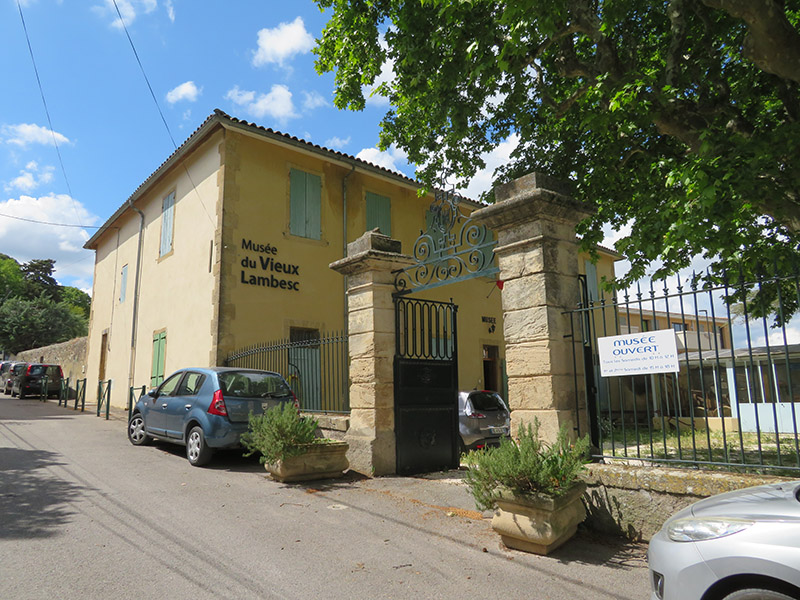


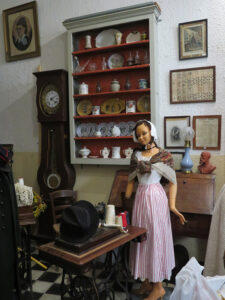
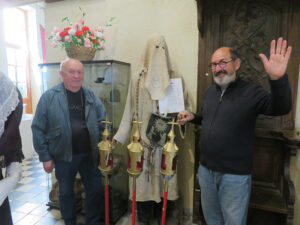
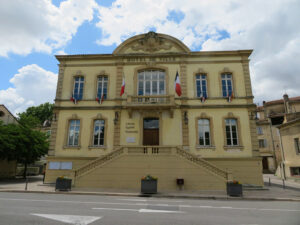
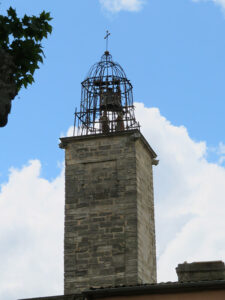
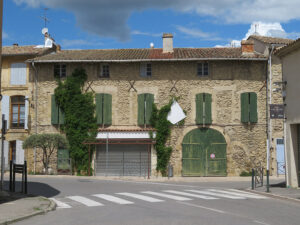

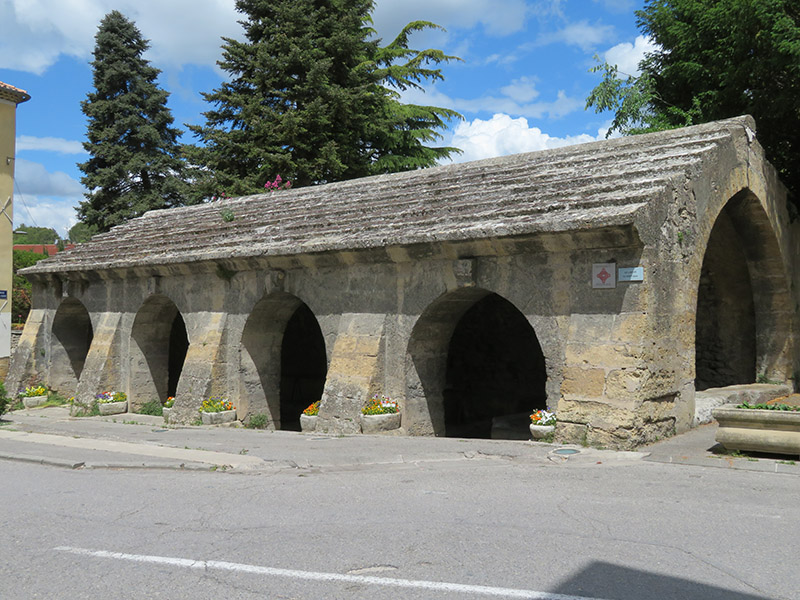
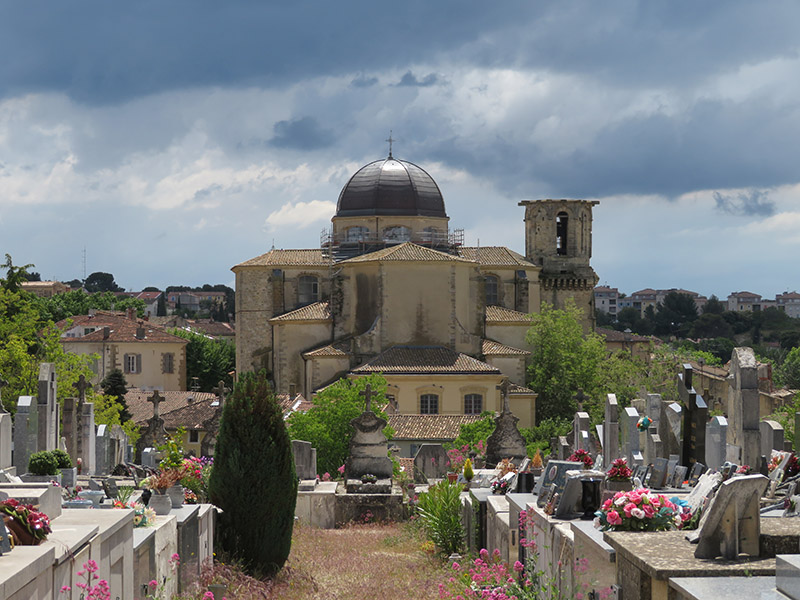
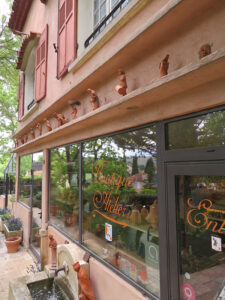
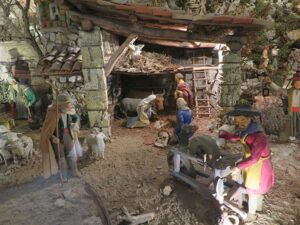
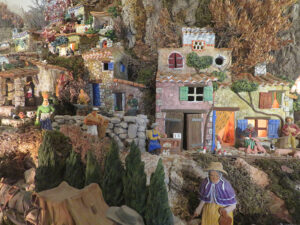
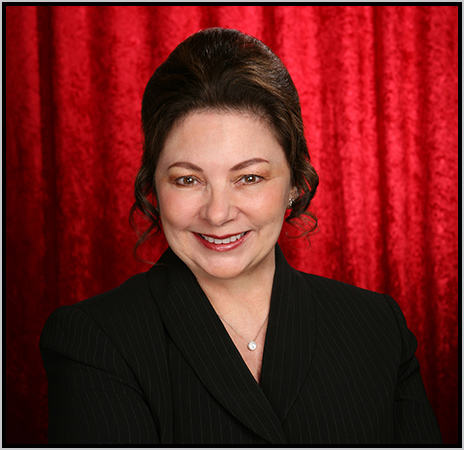 The official website of Lita-Luise Chappell, writer on sex, magic, food, distant lands, and everyday life with articles, poetry, novels, travelogues, rituals, cookbooks, and short-stories.
The official website of Lita-Luise Chappell, writer on sex, magic, food, distant lands, and everyday life with articles, poetry, novels, travelogues, rituals, cookbooks, and short-stories.
